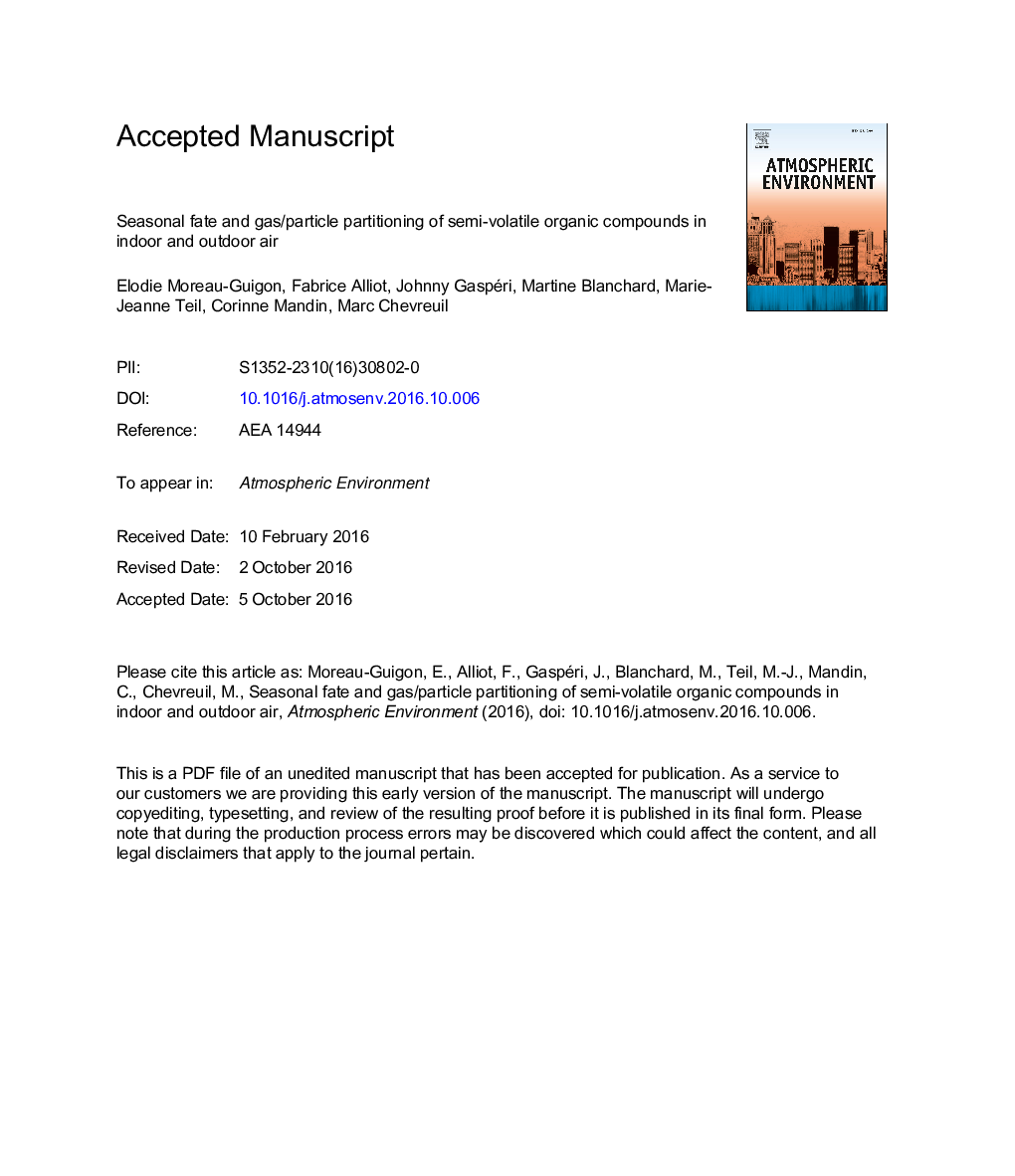| Article ID | Journal | Published Year | Pages | File Type |
|---|---|---|---|---|
| 6335602 | Atmospheric Environment | 2016 | 34 Pages |
Abstract
Fifty-eight semi-volatile organic compounds (SVOCs) were investigated simultaneously in three indoor (apartment, nursery and office building) and one outdoor environment in the centre of Paris (France). All of these compounds except tetrabromobisphenol A were quantified in the gaseous and particulate phases in all three environments, and at a frequency of 100% for the predominant compounds of each SVOC class. Phthalic acid esters (PAEs) were the most abundant group (di-iso-butyl phthalate: 29-661 ng mâ3, diethyl phthalate: 15-542 ng mâ3), followed by 4-nonylphenol (1.4-81 ng mâ3), parabens (methylparaben: 0.03-2.5 ng mâ3), hexachlorobenzene (HCB) (0.002-0.26 ng mâ3) and pentachlorobenzene (PeCB) (0.001-0.23 ng mâ3). Polycyclic aromatic hydrocarbons (as â8PAHs) ranged from 0.17 to 5.40 ng mâ3, polychlorinated biphenyls (as â7PCBi) from 0.06 to 4.70 ng.m3 and polybromodiphenyl ethers (as â8PBDEs) from 0.002 to 0.40 ng mâ3. For most pollutants, significantly higher concentrations were observed in the nursery compared to the apartment and office. Overall, the indoor air concentrations were up to ten times higher than outdoor air concentrations. Seasonal variations were observed for PAEs, PCBs and PAHs. SVOCs were predominantly identified in the gaseous phase (>90%), except for some high-molecular-weight PAEs, PAHs and PCBs.
Keywords
Related Topics
Physical Sciences and Engineering
Earth and Planetary Sciences
Atmospheric Science
Authors
Elodie Moreau-Guigon, Fabrice Alliot, Johnny Gaspéri, Martine Blanchard, Marie-Jeanne Teil, Corinne Mandin, Marc Chevreuil,
